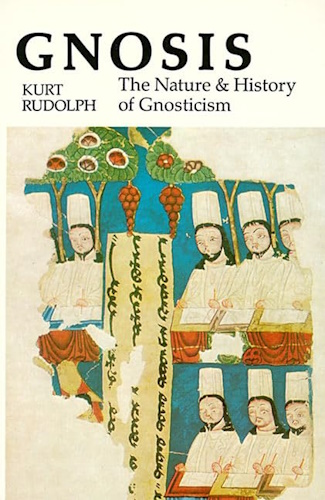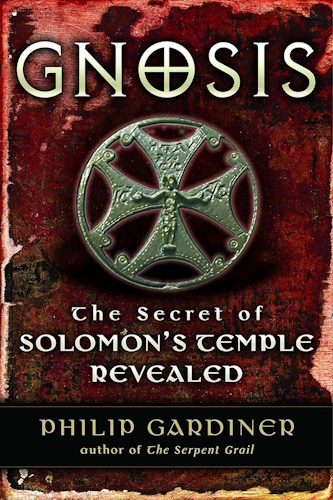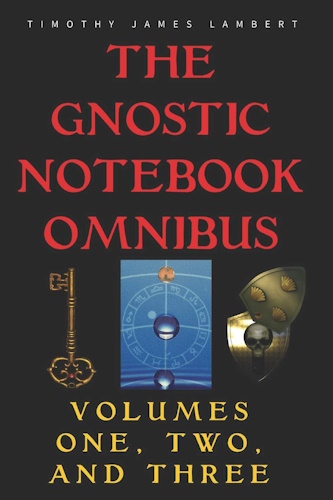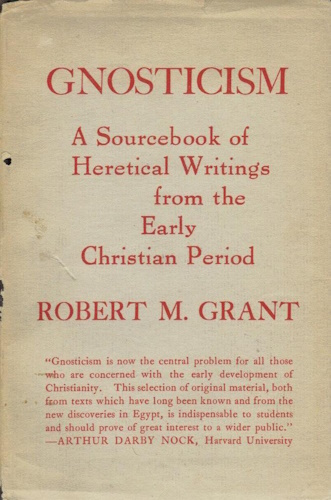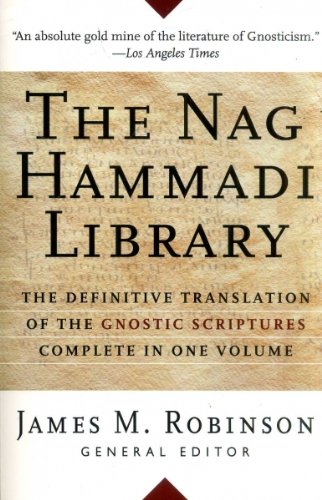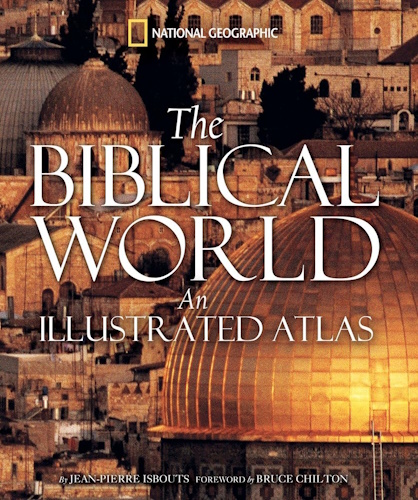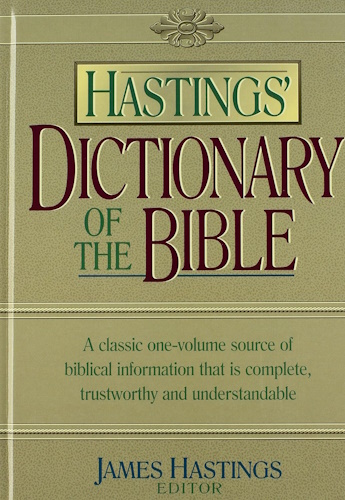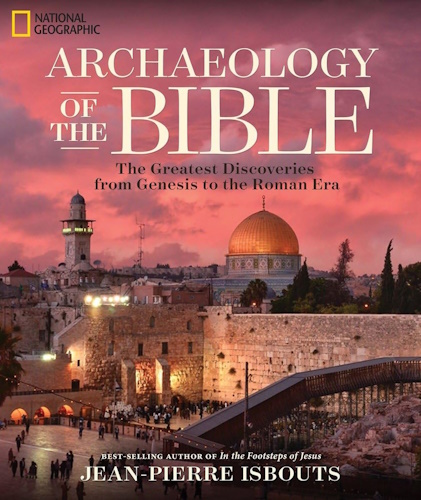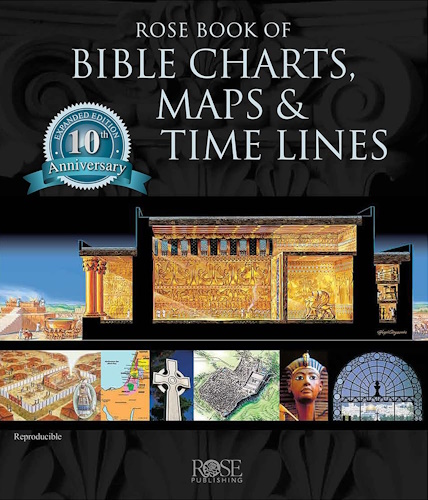
Authoritative Teaching
Translated by George W. MacRae
[...] in heaven [...] within him [...] anyone appears [...] the hidden heavens [...] appear, and before the invisible, ineffable worlds appeared. From these the invisible soul of righteousness came, being a fellow member, and a fellow body, and a fellow spirit. Whether she is in the descent or is in the Pleroma, she is not separated from them, but they see her and she looks at them in the invisible world.
Secretly her bridegroom fetched it. He presented it to her mouth to make her eat it like food, and he applied the word to her eyes as a medicine to make her see with her mind and perceive her kinsmen and learn about her root, in order that she might cling to her branch from which she had first come forth, in order that she might receive what is hers and renounce matter.
[...] he [dwelt...] having [...] sons. The sons [...] truly, those who have come from his seed, call the sons of the woman "our brothers". In this very way, when the spiritual soul was cast into the body, it became a brother to lust and hatred and envy, and a material soul. So therefore the body came from lust, and lust came from material substance. For this reason the soul became a brother to them.
And yet they are outsiders, without power to inherit from the male, but they will inherit from their mother only. Whenever, therefore, the soul wishes to inherit along with the outsiders - for the possessions of the outsiders are proud passions, the pleasures of life, hateful envies, vainglorious things, nonsensical things, accusations [...] for her [...] prostitution, he excludes her and puts her into the brothel. For [...] debauchery for her. She left modesty behind. For death and life are set before everyone. Whichever of these two they wish, then, they will choose for themselves.
That one then will fall into drinking much wine in debauchery. For wine is the debaucher. Therefore she does not remember her brothers and her father, for pleasure and sweet profits deceive her.
Having left knowledge behind, she fell into bestiality. For a senseless person exists in bestiality, not knowing what is proper to say and what it is proper not to say. But, on the other hand, the gentle son inherits from his father with pleasure, while his father rejoices over him because he receives honor on account of him from everyone, as he looks again for the way to double the things that he has received. For the outsiders [...].
[...] to mix with the [...]. For if a thought of lust enters into a virgin man, he has already become contaminated. And their gluttony cannot mix with moderation. For if the chaff is mixed with the wheat, it is not the chaff that is contaminated, but the wheat. For since they are mixed with each other, no one will buy her wheat, because it is contaminated. But they will coax him, "Give us this chaff!", seeing the wheat mixed with it, until they get it and throw it with all other chaff, and that chaff mixes with all other materials. But a pure seed is kept in storehouses that are secure. All these things,then, we have spoken.
And before anything came into being, it was the Father alone who existed, before the worlds that are in the heavens appeared, or the world that is on the earth, or principality, or authority, or the powers. [...] appear [...] and [...] And nothing came into being without his wish.
He, then, the Father, wishing to reveal his wealth and his glory, brought about this great contest in this world, wishing to make the contestants appear, and make all those who contend leave behind the things that had come into being, and despise them with a lofty, incomprehensible knowledge, and flee to the one who exists.
And (as for) those who contend with us, being adversaries who contend against us, we are to be victorious over their ignorance through our knowledge, since we have already known the Inscrutable One from whom we have come forth. We have nothing in this world, lest the authority of the world that has come into being should detain us in the worlds that are in the heavens, those in which universal death exists, surrounded by the individual [...] worldly. We have also become ashamed of the worlds, though we take no interest in them when they malign us. And we ignore them when they curse us. When they cast shame in our face, we look at them and do not speak.
For they work at their business, but we go about in hunger (and) in thirst, looking toward our dwelling-place, the place which our conduct and our conscience look toward, not clinging to the things which have come into being, but withdrawing from them. Our hearts are set on the things that exist, though we are ill (and) feeble (and) in pain. But there is a great strength hidden within us.
Our soul indeed is ill because she dwells in a house of poverty, while matter strikes blows at her eyes, wishing to make her blind. For this reason she pursues the word and applies it to her eyes as a medicine <opening> them, casting away [...] thought of a [...] blindness in [...] afterwards, when that one is again in ignorance, he is completely darkened and is material. Thus the soul [...] a word every hour, to apply it to her eyes as a medicine in order that she may see, and her light may conceal the hostile forces that fight with her, and she may make them blind with her light, and enclose them in her presence, and make them fall down in sleeplessness, and she may act boldly with her strength and with her scepter.
While her enemies look at her in shame, she runs upward into her treasure-house - the one in which her mind is - and (into) her storehouse which is secure, since nothing among the things that have come into being has seized her, nor has she received a stranger into her house. For many are her homeborn ones who fight against her by day and by night, having no rest by day or by night, for their lust oppresses them.
For this reason, then, we do not sleep, nor do we forget the nets that are spread out in hiding, lying in wait for us to catch us. For if we are caught in a single net, it will suck us down into its mouth, while the water flows over us, striking our face. And we will be taken down into the dragnet, and we will not be able to come up from it, because the waters are high over us, flowing from above downward, submerging our heart down in the filthy mud. And we will not be able to escape from them. For man-eaters will seize us and swallow us, rejoicing like a fisherman casting a hook into the water. For he casts many kinds of food into the water because each one of the fish has his own food. He smells it and pursues its odor. But when he eats it, the hook hidden within the food seizes him and brings him up by force out of the deep waters. No man is able, then, to catch that fish down in the deep waters, except for the trap that the fisherman sets. By the ruse of food he brought the fish up on the hook.
In this very way we exist in this world, like fish. The adversary spies on us, lying in wait for us like a fisherman, wishing to seize us, rejoicing that he might swallow us. For he places many foods before our eyes (things) which belong to this world. He wishes to make us desire one of them and to taste only a little, so that he may seize us with his hidden poison and bring us out of freedom and take us into slavery. For whenever he catches us with a single food, it is indeed necessary for us to desire the rest. Finally, then, such things become the food of death.
Now these are the foods with which the devil lies in wait for us. First he injects a pain into your heart until you have heartache on account of a small thing of this life, and he seizes (you) with his poisons. And afterward (he injects) the desire of a tunic, so that you will pride yourself in it, and love of money, pride, vanity, envy that rivals another envy, beauty of body, fraudulence. The greatest of all these are ignorance and ease.
Now all such things the adversary prepares beautifully and spreads out before the body, wishing to make the mind of the soul incline her toward one of them and overwhelm her, like a hook, drawing her by force in ignorance, deceiving her until she conceives evil, and bears fruit of matter, and conducts herself in uncleanness, pursuing many desires, covetousnesses, while fleshly pleasure draws her in ignorance.
But the soul - she who has tasted these things - realized that sweet passions are transitory. She had learned about evil; she went away from them and she entered into a new conduct. Afterwards she despises this life, because it is transitory. And she looks for those foods that will take her into life, and leaves behind her those deceitful foods. And she learns about her light, as she goes about stripping off this world, while her true garment clothes her within, (and) her bridal clothing is placed upon her in beauty of mind, not in pride of flesh. And she learns about her depth and runs into her fold, while her shepherd stands at the door. In return for all the shame and scorn, then, that she received in this world, she receives ten thousand times the grace and glory.
She gave the body to those who had given it to her, and they were ashamed, while the dealers in bodies sat down and wept because they were not able to do any business with that body, nor did they find any (other) merchandise except it. They endured great labors until they had shaped the body of this soul, wishing to strike down the invisible soul. They were therefore ashamed of their work; they suffered the loss of the one for whom they had endured labors. They did not realize that she has an invisible spiritual body, thinking, "We are her shepherd who feeds her." But they did not realize that she knows another way, which is hidden from them. This her true shepherd taught her in knowledge.
But these - the ones who are ignorant - do not seek after God. Nor do they inquire about their dwelling-place, which exists in rest, but they go about in bestiality. They are more wicked than the pagans, because first of all they do not inquire about God, for their hardness of heart draws them down to make them their cruelty. Furthermore, if they find someone else who asks about his salvation, their hardness of heart sets to work upon that man. And if he does not stop asking, they kill him by their cruelty, thinking that they have done a good thing for themselves.
Indeed they are sons of the devil! For even pagans give charity, and they know that God who is in the heavens exists, the Father of the universe, exalted over their idols, which they worship. But they have not heard the word, that they should inquire about his ways. Thus the senseless man hears the call, but he is ignorant of the place to which he has been called. And he did not ask during the preaching, "Where is the temple into which I should go and worship my hope?"
On account of his senselessness, then, he is worse than a pagan, for the pagans know the way to go to their stone temple, which will perish, and they worship their idol, while their hearts are set on it because it is their hope. But to this senseless man the word has been preached, teaching him, "Seek and inquire about the ways you should go, since there is nothing else that is as good as this thing." The result is that the substance of hardness of heart strikes a blow upon his mind, along with the force of ignorance and the demon of error. They do not allow his mind to rise up, because he was wearying himself in seeking that he might learn about his hope.
But the rational soul who (also) wearied herself in seeking - she learned about God. She labored with inquiring, enduring distress in the body, wearing out her feet after the evangelists, learning about the Inscrutable One. She found her rising. She came to rest in him who is at rest. She reclined in the bride-chamber. She ate of the banquet for which she had hungered. She partook of the immortal food. She found what she had sought after. She received rest from her labors, while the light that shines forth upon her does not sink. To it belongs the glory and the power and the revelation for ever and ever. Amen.
Authoritative Teaching
Selection made from James M. Robinson, ed., The Nag Hammadi Library, revised edition.
HarperCollins, San Francisco, 1990.
![]()
![]()
-
Urantia Book, 44:0.11 - The Celestial Artisans
Never in your long ascendancy will you lose the power to recognize your associates of former existences. Always, as you ascend inward in the scale of life, will you retain the ability to recognize and fraternize with the fellow beings of your previous and lower levels of experience. Each new translation or resurrection will add one more group of spirit beings to your vision range without in the least depriving you of the ability to recognize your friends and fellows of former estates.
-
Princess Bride 1987 Wallace Shawn (Vizzini) and Mandy Patinkin (Inigo Montoya)
Vizzini: HE DIDN'T FALL? INCONCEIVABLE.
Inigo Montoya: You keep using that word. I do not think it means what you think it means. -
Urantia Book, 117:4.14 - The Finite God
And here is mystery: The more closely man approaches God through love, the greater the reality -- actuality -- of that man. The more man withdraws from God, the more nearly he approaches nonreality -- cessation of existence. When man consecrates his will to the doing of the Father's will, when man gives God all that he has, then does God make that man more than he is.
-
Urantia Book, 167:7.4 - The Talk About Angels
"And do you not remember that I said to you once before that, if you had your spiritual eyes anointed, you would then see the heavens opened and behold the angels of God ascending and descending? It is by the ministry of the angels that one world may be kept in touch with other worlds, for have I not repeatedly told you that I have other sheep not of this fold?"
-
Urantia Book, Foreword - 0:12.12 - The Trinities
But we know that there dwells within the human mind a fragment of God, and that there sojourns with the human soul the Spirit of Truth; and we further know that these spirit forces conspire to enable material man to grasp the reality of spiritual values and to comprehend the philosophy of universe meanings. But even more certainly we know that these spirits of the Divine Presence are able to assist man in the spiritual appropriation of all truth contributory to the enhancement of the ever-progressing reality of personal religious experience—God-consciousness.
-
Urantia Book, 1:4.3 - The Mystery Of God
When you are through down here, when your course has been run in temporary form on earth, when your trial trip in the flesh is finished, when the dust that composes the mortal tabernacle "returns to the earth whence it came"; then, it is revealed, the indwelling "Spirit shall return to God who gave it." There sojourns within each moral being of this planet a fragment of God, a part and parcel of divinity. It is not yet yours by right of possession, but it is designedly intended to be one with you if you survive the mortal existence.
-
Urantia Book, 1:4.1 - The Mystery Of God
And the greatest of all the unfathomable mysteries of God is the phenomenon of the divine indwelling of mortal minds. The manner in which the Universal Father sojourns with the creatures of time is the most profound of all universe mysteries; the divine presence in the mind of man is the mystery of mysteries.
-
Urantia Book, 1:4.6 - The Mystery Of God
To every spirit being and to every mortal creature in every sphere and on every world of the universe of universes, the Universal Father reveals all of his gracious and divine self that can be discerned or comprehended by such spirit beings and by such mortal creatures. God is no respecter of persons, either spiritual or material. The divine presence which any child of the universe enjoys at any given moment is limited only by the capacity of such a creature to receive and to discern the spirit actualities of the supermaterial world.
-
Urantia Book, 11:0.1 - The Eternal Isle Of Paradise
Paradise is the eternal center of the universe of universes and the abiding place of the Universal Father, the Eternal Son, the Infinite Spirit, and their divine co-ordinates and associates. This central Isle is the most gigantic organized body of cosmic reality in all the master universe. Paradise is a material sphere as well as a spiritual abode. All of the intelligent creation of the Universal Father is domiciled on material abodes; hence must the absolute controlling center also be material, literal. And again it should be reiterated that spirit things and spiritual beings are real.
-
Urantia Book, 50:6.4 - Planetary Culture
Culture presupposes quality of mind; culture cannot be enhanced unless mind is elevated. Superior intellect will seek a noble culture and find some way to attain such a goal. Inferior minds will spurn the highest culture even when presented to them ready-made.
-
Urantia Book, 54:1.6 - True And False Liberty
True liberty is the associate of genuine self-respect; false liberty is the consort of self-admiration. True liberty is the fruit of self-control; false liberty, the assumption of self-assertion. Self-control leads to altruistic service; self-admiration tends towards the exploitation of others for the selfish aggrandizement of such a mistaken individual as is willing to sacrifice righteous attainment for the sake of possessing unjust power over his fellow beings.
-
Urantia Book, 54:1.9 - True And False Liberty
How dare the self-willed creature encroach upon the rights of his fellows in the name of personal liberty when the Supreme Rulers of the universe stand back in merciful respect for these prerogatives of will and potentials of personality! No being, in the exercise of his supposed personal liberty, has a right to deprive any other being of those privileges of existence conferred by the Creators and duly respected by all their loyal associates, subordinates, and subjects.
-
Urantia Book, 54:1.8 - True And False Liberty
There is no error greater than that species of self-deception which leads intelligent beings to crave the exercise of power over other beings for the purpose of depriving these persons of their natural liberties. The golden rule of human fairness cries out against all such fraud, unfairness, selfishness, and unrighteousness.


